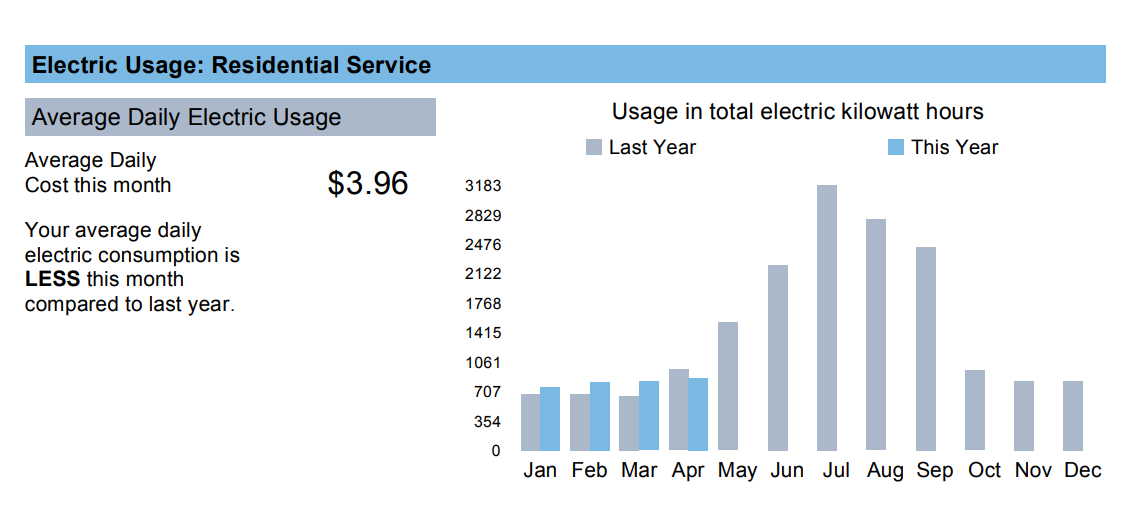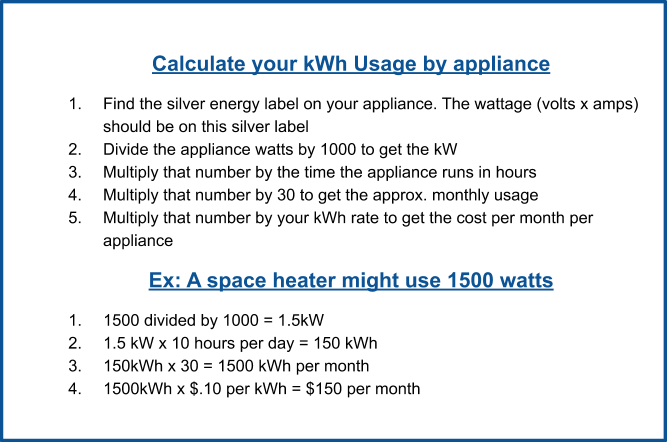Understanding Your Home Energy Use
HOME ENERGY USE
Beginning in 2015, ImpactNV (acting as EnergyFit Nevada) was awarded a contract for the NV Energy PowerShift program. From 2015 to mid 2019, EFN assessors performed more than 18,000 in-home energy assessments for customers throughout Northern and Southern Nevada. These energy assessments included detailed, expert evaluations of all energy use in the home and recommendations to reduce use and make residents’/renters’ homes as efficient as possible. Below, our assessors compile answers to frequently asked questions as well as offer some general advice on best practices geared toward reducing energy use in your home.
General Energy Use Information
1. Understand what monthly billing plan you’re on:
This step is crucial: are you being charged for your monthly usage? Or are you on a budget billing plan? If you’re charged monthly for your usage, you’ll receive a bill every cycle charging you for the number of kilowatt hours your household used that month at the prevailing rate. If you’re on a monthly budget billing plan, your utility takes the average number of kilowatt hours you consumed last year, assumes that you’ll use around the same this year, and creates a monthly average for you to pay. This spreads out the total costs you pay for power over the course of the year. As a result, if you live in a hot part of the country and use electricity to run your air conditioner, in the summer months you’ll see a lower bill than your neighbors who are on a monthly usage billing cycle. But on the other hand, in the winter months you should expect a higher bill than your neighbors.
2. Know how many hours of electricity you use per month:
Ensure you’re correctly calculating the amount of power you use in a given month. Many bills will break out your daily use, or simply show you how your monthly usage changes over the course of the year. Make sure that you’re measuring and assessing your usage over the same period that you’re billed on: for most consumers, this will be monthly.

3. Reading your bill:
Current Charges –This section of your bill will show your current account balance, or how much you owe to your utility company and when that amount is due. The way your utility company determines this amount is by taking two readings of your electric meter. One at the start of the billing period and one at the end. They then take the difference between these two amounts and multiply it by the current energy rate.
Billing Period –This part of your bills explains when your energy company takes both the first and second readings of your electric meter each month. The dates for these readings should be roughly the same each month, though there does tend to be a little variation. Usually 28-34 days.
Miscellaneous Charges – Every utility company is different and will have their own unique set of miscellaneous charges on their monthly billing statements. Usually the definition of the charge will be listed on the bill. If you have any questions about fees on your bill, contact the billing department of your utility company and ask them to explain the charge to you.
4. Understanding KWh Usage:
When you look at your electricity bill, you will see the total number of kWhs you used in the month, but you can’t tell how much electricity each appliance is using. To find the general number of kWhs you use per month for each appliance, you can use this method:
KWH Calculation Method:

Frequently Asked Questions (FAQs) About Energy Use
Common Energy Misconceptions
NEWSLETTER SIGN UP
Join Nevada’s Sustainability Alliance and be a part of the movement towards a greener, more sustainable future!

